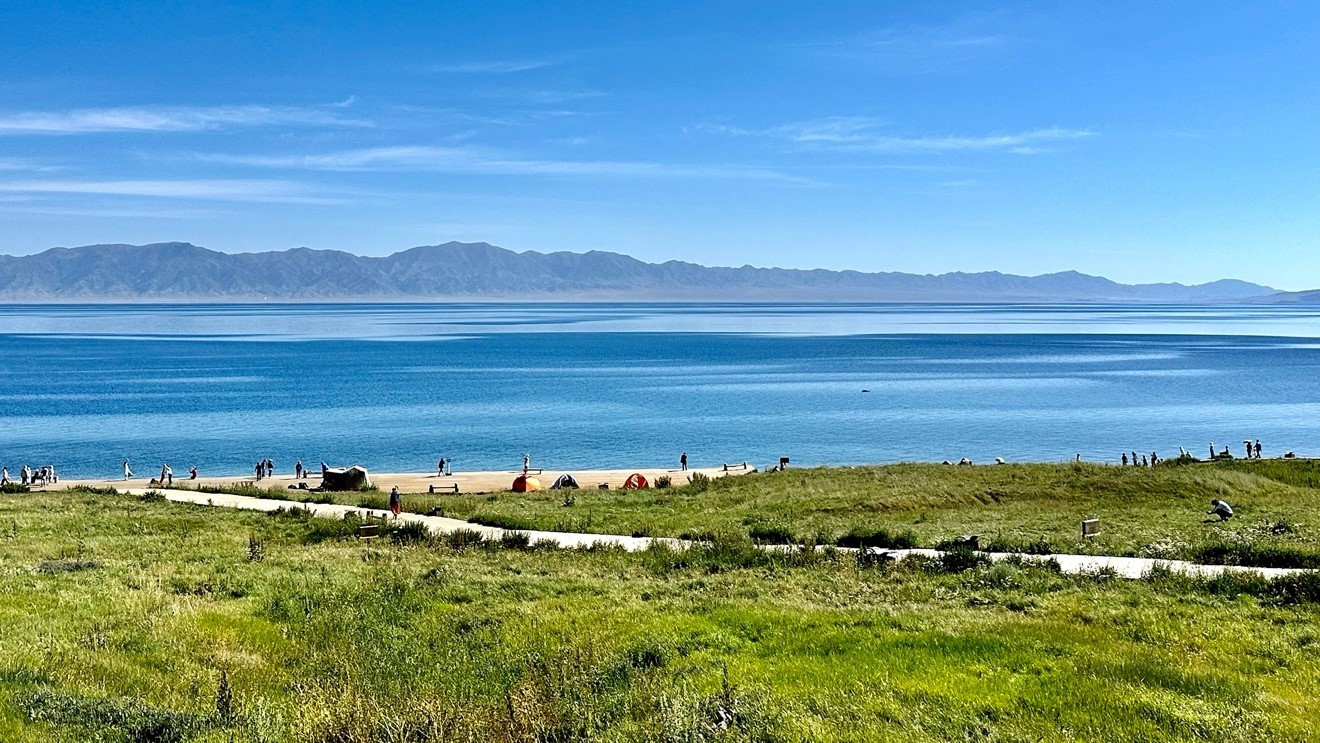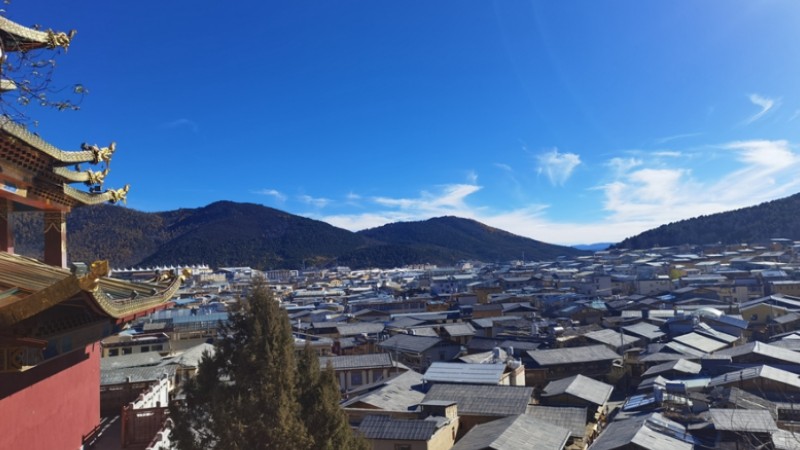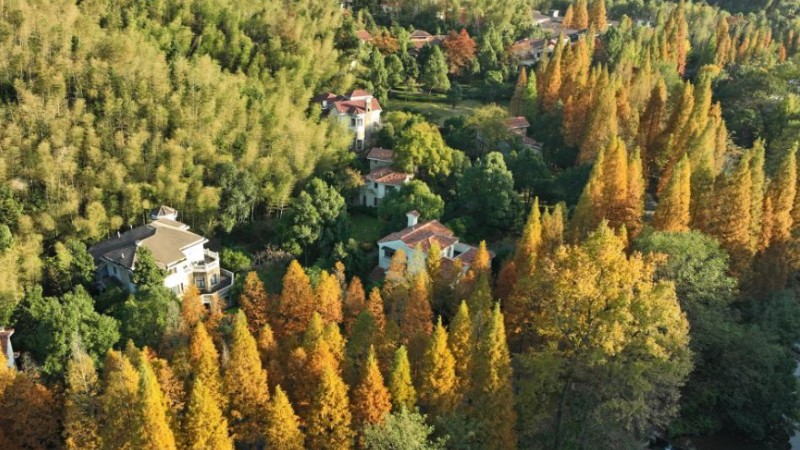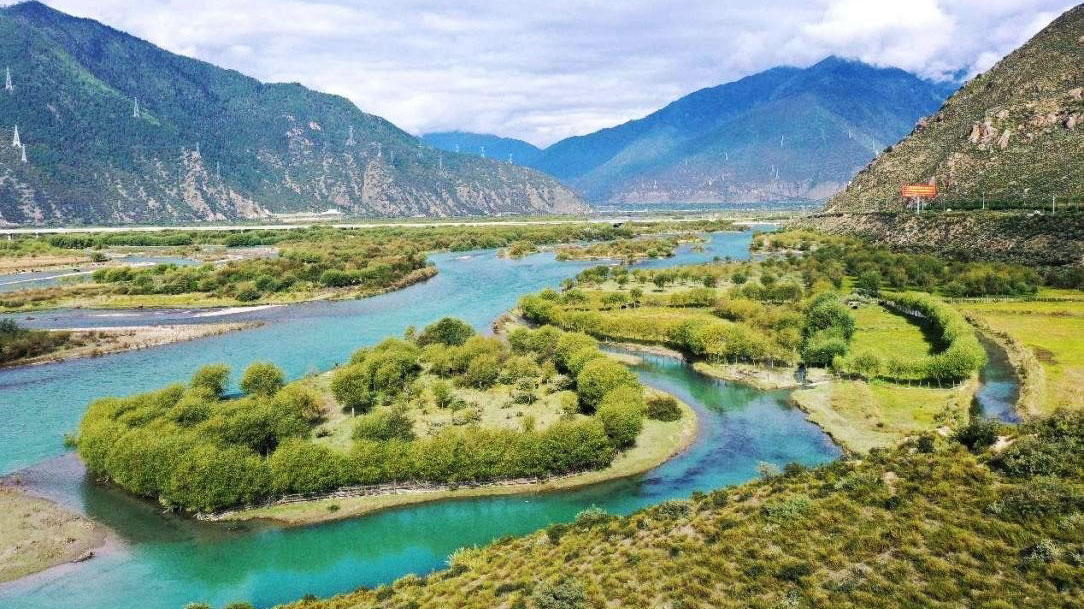Bortala: A thriving border hub driving industrial integration
It was a land of mystique and wonder in times of old. Nestled in the western frontier of China, it unfolds with a grandeur that left anyone who visit it spellbound — snow-clad mountains, lush forests, vast deserts, and emerald oases, each a vivid stroke in a masterful painting.
Bortala Mongolian Autonomous Prefecture is situated in northwest China's Xinjiang Uygur Autonomous Region. In Mongolian, Bortala means "green grassland." Once a pivotal crossroads on the ancient Silk Road, Bortala now stands as a key node linking Europe and Asia. Within this enchanting realm of natural beauty, profound culture, and thriving industry, Bortala has transformed into a captivating wonderland along the Belt and Road.
Small goji berry, big industry
In a blistering July day, Jinghe county in the southeast of Bortala emerged as a stretched canvas painted with vibrant hues of lush goji berry fields. Goji berry farmer Wang Lei, along with over 50 workers, seized the farming season to harvest the goji berries. “The goji berries in Jinghe county have thin skin, thick flesh and are rich in sugar, making them particularly delightful in taste,” said Wang Lei, who has been cultivating goji berries for over 30 years.
Jinghe county, dubbed as the “hometown of Chinese Goji Berries,” boasts a storied legacy of goji berry cultivation dating back a century. Presently, the county spans a vast expanse of over 103,100 mu (6,873 hectares) of goji berry plantations, yielding an annual output of fresh fruit reaching nearly 60,000 tonnes and culminating in a total output value that surpasses 660 million yuan, which contributes to 35 percent of the county's total agricultural output.
Wang Lei recalled a time when harvested goji berries were predominantly sun-dried before being sold. This practice left farmers vulnerable to unpredictable weather, leading to inconsistent incomes after a year of tireless toil. “Now, our freshly plucked goji berries are directly sent to companies, with a minimum purchase price of approximately 16 yuan per kilogram,” Wang said, adding that with their income are on the rise, their lives thrive like these luscious goji berries.
In recent years, Jinghe county has embarked on a steadfast journey to foster the whole industry chain of goji berries from planting to processing and marking. The endeavor, steered by the “company + cooperatives + farmers” model, has thicken the wallets of local farmers.
Xinjinag Jingqishen Goji Berry Co., Ltd. stands outs as a paradigm to this vision, achieving a plethora of goji berry deep-processing wonders. “After more than a decade of dedicated development, our company now boasts eight production lines, producing an array of products such as goji berry juice, puree, beverages, dried fruits, and beyond, totaling over 20 types,” explained Dai Xusheng, the head of Xinjiang Jingqishen Goji Berry Co., Ltd.
The company’s products has not only made a presence in domestic market, both online and offline, but also found their way to the shelves of over 30 countries, including the Netherlands and Germany.
This year, the company exported its goji berry beverages to five Central Asian nations. This success, according to Dai, is attributable to the promotion of the Belt and Road Initiative. As a result, the global reputation of Jinghe goji berries is soaring, and with the help of ever-improving international logistics, the global business of goji berry products becomes more streamlined and convenient, Dai added.
From desolate area to pivotal land port
Nestled in the northeastern expanse of Bortala and bordering Kazakhstan, Alashankou city is one of China's four wind gateways. “The wind blows once a year, each lasting from spring to winter.” This was once the most indelible impression that Alashankou city has etched on the outside world.
The border city has ushered in an extraordinary upswing thanks to railway infrastructure. In 1990, national authorities officially ordained the establishment of Alataw Pass (or Alashankou Port). In 2011, Alataw Pass witnessed the foundation of the comprehensive bonded zone, and the passage of the nation’s first China-Europe freight train. In 2012, Alashankou was upgraded to a county-level city.

A China-Europe freight train departs from Alataw Pass in northwest China's Xinjiang Uygur Autonomous Region, July 24, 2023. (People's Daily Online/Xian Jiangnan)
As the Belt and Road Initiative forges ahead, the demand for international trade has surged, positioning Alashankou as one of China's closest and most accessible gateways to Central Asia, West Asia, and even Europe. The annual influx and efflux of China-Europe freight trains through Alataw Pass have surged. The port city of Alashankou has been emerging as a pivotal hub between China and the Eurasian continent.
“The Alataw Pass has seen more than 30,000 China-Europe freight train trips from 2011. As import and export trade flourish, the scale of train services has burgeoned from a monthly average of 3.5 in 2012 to the current daily average of 17,” said Chen Qian, Secretary of the Communist Youth League of Alataw Pass border station of China Railway Urumqi Group Co., Ltd.
From January to mid-July this year, Alataw Pass has borne witness to the passage of 3520 China-Europe (Central Asia) freight trains, representing an 11.1 percent year-on-year increase. Railway freight volume reached about 7.48 million tonnes, surging by 18.8 percent year-on-year, while road imports and exports have ascended to 316,700 tonnes, marking a 228.53 percent year-on-year growth.
Driven by the impetus of the Belt and Road Initiative, Alashankou stands wide open to the Eurasian continent as a pivotal land port. What was once a desolate area in Gobi desert, howling in the relentless winds, has now developed into a “golden gateway” in northwest China with intricate networks of railways, roadways, aviation, and pipelines.
Eco-development shines on Sayram Lake
From the awe-inspiring desert landscapes and soothing hot springs, to boundless grasslands and snow-capped mountains, Bortala has them all. A treasure-house of distinctive attractions, the region is nurturing its burgeoning tourism sector, with Sayram Lake standing out as a radiant hue in its vibrant tapestry of natural wonders.

Photo taken on July 26 shows the Sayram Lake scenic area in Bortala Mongolian Autonomous Prefecture, northwest China's Xinjiang Uygur Autonomous Region. (People's Daily Online/Zhou Yu)
Sayram Lake, recognized as the highest and largest alpine lake in northwest China's Xinjiang Uygur Autonomous Region, delivers awe-inspiring vistas throughout the year. This natural jewel is often called “the last teardrop of the Atlantic Ocean.”
The lake's scenic area hosts an abundant array of flora and fauna. Swans, mountain goats, and other wildlife can frequently be seen here, crafting a mesmerizing spectacle of humanity's harmonious relationship with nature.
As an enclosed plateau lake, Sayram's ecological balance demands vigilant care. Local authorities have taken a series of measures, including imposing a grazing ban across the expanse of 425,000 mu (28,333 hectares) surrounding the lake, restoring 130,000 mu (8,667 hectares) of grasslands, and cleaning up a stretch of 94 kilometers of waterways. These efforts have effectively protected the ecology and environment of the Sayram Lake scenic area.
"In recent years, the grasslands around Sayram Lake have become greener, the lake water clearer, and the sky bluer," Haster, director of the Resource and Environmental Management Bureau of the scenic area, told People's Daily Online. He added that the vegetation restoration rate in the area's core exceeded 95 percent, and the lake's water quality now meets Class II standards, with some water areas reaching Class I standards.
Today, Sayram Lake has regained its former splendor, attracting many travelers from across the globe. Statistics reveal that the average number of daily visits to the Sayram Lake scenic area has reached 38,700 since July this year. Tourists can take a self-guided tour around the lake and participate in various recreational activities, such as powered paragliding and sailing.
"We will continue to improve tourism facilities and enhance ecological protection, ensuring that visitors enjoy the best possible experience amidst this beautiful environment," Haster said.
Photos
Related Stories
Copyright © 2023 People's Daily Online. All Rights Reserved.









